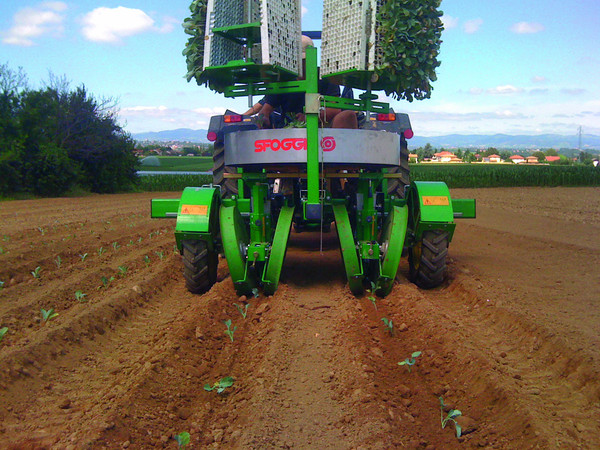
Series F and C, the fast transplanters by Sfoggia
In the range of Sfoggia transplanters - core business for the Treviso brand together with soil preparation machines - the models of the F and C series are worth mentioning. They are multi-purpose semi-automatic applications designed to process seedlings from starter trays (tomato, pepper, salad, lettuce, radicchio, cabbage, tobacco, etc.), equipped with a distribution system through which an operator can transplant two rows simultaneously. Both series are equipped with a rocker arm, which allows the transplant group to follow the contour of the soil and to adapt to it, and with nylon beak distributors, which prevent the peat of the plants to remain attached to the walls, thus facilitating the cleaning and reducing the transplanter’s working time. Both models share average productivity - approximately 7,000 plants per hour per operator - and, in the basic setup, the availability of the guillotine system to support the product.
However, what differentiates them is the type of product for which they are designed. The F transplanter is equipped with a plant descent tube in stainless steel (the one for the C model is painted steel) and a wider ploughshare for opening the groove, suitable for seedlings with voluminous leaf structures (such as cabbage or tobacco); on both machines the ploughshare is a high strength material (hardened boron steel) and is therefore able to withstand heavy workloads even on the most difficult terrain.
Three versions are provided by Sfoggia for the F and C series: with 10, 12, and 18 cups, with an inter-row width comprised between 30 and 60 cm for the first, 40 and 70 cm for the second, and between 60 and 120 cm for the 18 cup application.








